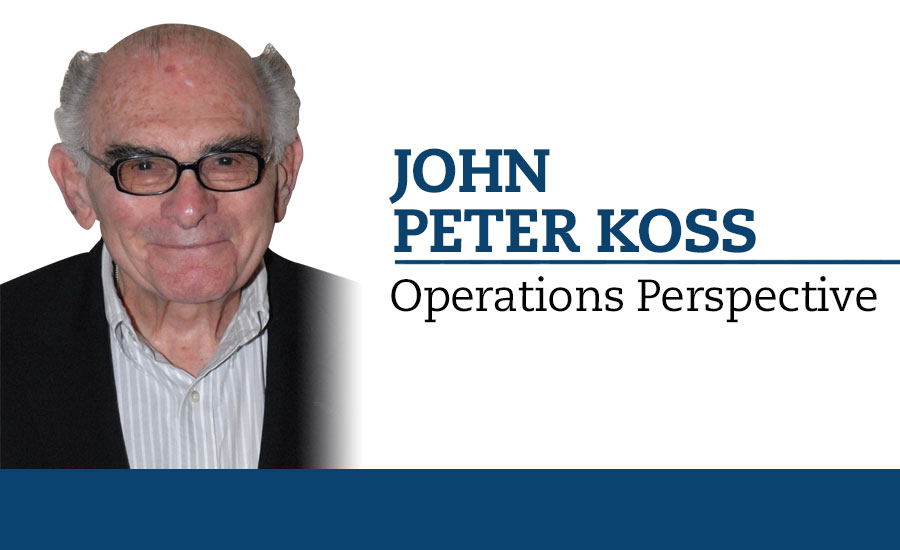Flexible manufacturing an economic necessity
Line flexibility detrimental to beverage products, packaging

The continuing evolution of a concept becomes evidence of the impact and importance it has on the need, scope and application across a broad base of industries. This is especially true in manufacturing plants.
The concept or idea of introducing flexibility into a manufacturing process line unofficially began at the start of the 20th century. It became a systematic entity with the advent of the automobile and was officially established right after World War II. Flexible manufacturing has exponentially progressed ever since.
There are various definitions, numerous interpretations, voluminous documentaries and countless conditional applications for a manufacturing innovation process which today is simply referred to as: flexible manufacturing.
Considerable progress has been made in flexible manufacturing, by design and conditional necessity, to make more industries amenable to practical flexibility.
From an operations perspective, and especially in the beverage arena, the flexibility concept, from research and experience, was introduced more than 50 years ago. Realistically, the innovation was not put into practice prior to that time because beverage manufacturing lines were reasonably stable, SKU’s were not as voluminous, dedicated lines were the norm and new product introductions were low frequency. In addition, modest production speed levels did not require timely adjustments to machines, materials, packages and other capability or critical issues being encountered today.
Since the operating conditions have so dramatically changed, flexible manufacturing has almost become an economic necessity for most beverage producers. The domino effect is real and presents a challenge for the best of the best beverage line designers.
Several significant factors actually drive the need for flexibility in beverage production line configurations so let’s take a closer look along the supply chain to discuss some of the impacts and the ever-present global concerns occurring regardless of the time or location of the market.
Product processing
In the supply chain, products and packaging impact the very first step by ensuring that processing equipment has the capability to mix and/or formulate a variety of products that may possess different characteristics and handling methods. If equipment does not have the flexibility, specialized units might be required (or even designed) for each product.
With constantly changing operating conditions, producers must be positioned to 1) handle the “product modification syndrome” (PMS) as dictated by those who make product decisions; and 2) evaluate the practical, competitive, economic and investment aspects that would provide in-house flexibility or reasonable alternatives.
Once products have been prepared, the domino effect continues into step two — packaged production, where line flexibility becomes specific and critical.
Although the product may impact ancillary equipment to some extent, it is ready to be packaged. The workstation operating equipment, washing/filling containers, applying closures, sticking labels, configuring containers, filling cases and building pallet loads, must possess adequate flexibility to be categorized as “flexible manufacturing.”
For example, when it comes to canning lines, 12-ounce cans were a longtime norm; however, 16 ounces entered the market, then 8-ounce cans became the new player which required either additional or modified filling/closing equipment.
In addition to can filling/closing equipment, conveyors and related hardware, combiners, packers and palletizers must be flexible enough to efficiently and economically handle all the size variations.
Bottling lines, both glass and plastic, have transitioned into flexible manufacturing. With the reduction of glass in the package mix, many producers running predominately plastic bottle production lines have modified equipment to handle 8-ounce to 2-liter containers. The cost and flexibility has varied with individual projects; however, the results have indicated that although cost was a factor, being competitive and having the capability of making timely, economical and necessary changes were the main objectives.
Research and observation indicate that producer production facilities have become more flexible and resulted in a reduced number of lines from application of the “old concept” of flexible manufacturing — six to five, four to three, five to four and so on. Indications reveal that the investment payback on these projects has been justified.
In almost all cases, transitioning to the flexibility concept took a significant, coordinated and dedicated effort amongst the machinery manufacturer, materials supplier and producer management — and that’s likely to continue. BI
Looking for a reprint of this article?
From high-res PDFs to custom plaques, order your copy today!




